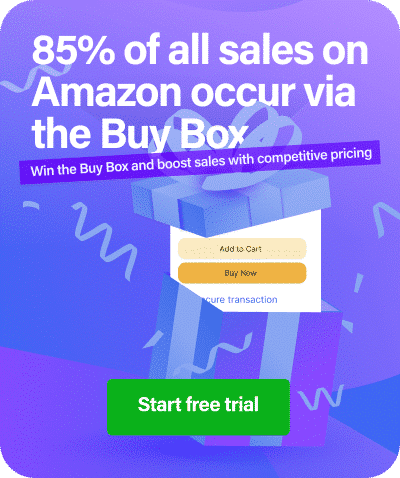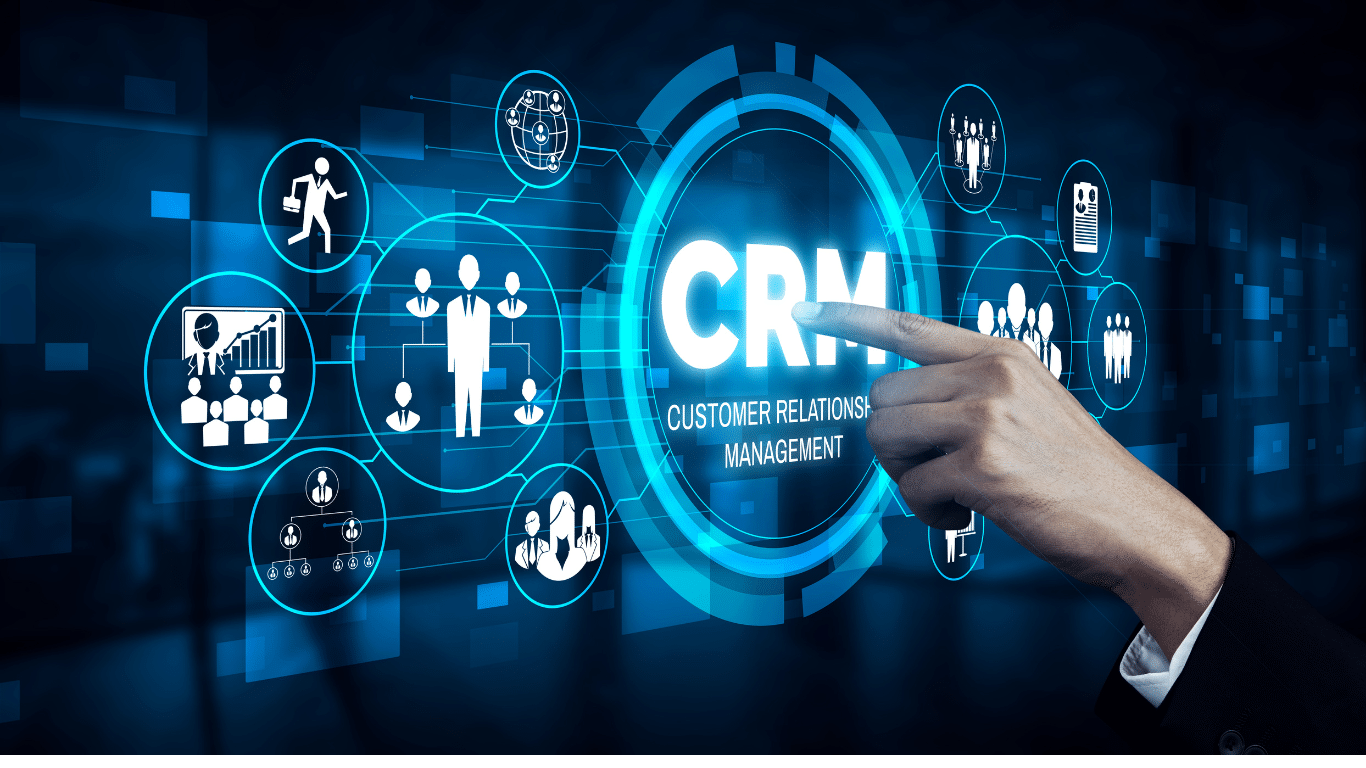You’re losing sales every time a competitor takes the Buy Box. The solution? Buy Box predictors that use artificial intelligence to forecast your winning chances before you adjust your price.
These tools analyze dozens of real-time signals to help you price smarter, not cheaper. I’ve spent years testing repricing software, and the shift from basic automation to predictive models has changed how successful sellers compete on Amazon.
This guide breaks down how Buy Box prediction works, which tools offer the best forecasting capabilities, and how to use these systems without falling into common traps.
What Are Buy Box Predictors and Why They Matter
Buy Box predictors are algorithms that calculate your probability of winning the Amazon Buy Box at different price points. They process competitor data, seller metrics, and fulfillment factors to recommend optimal prices.
The Buy Box drives 80-83% of Amazon sales. Winning it means customers add your product to cart with one click. Losing it means shoppers need to click “Other Sellers” to find you, and most never do.
Traditional repricers follow rigid rules: beat the lowest price by $0.01, stay within a min/max range, or match specific competitors. These systems react after changes happen.
Predictive repricers work differently. They forecast outcomes before making price changes. The software estimates your Buy Box win rate at various price levels and adjusts based on your business goals, whether that’s maximum revenue, profit margin, or sales velocity.
The Evolution from Static Rules to Predictive Models
Early repricing tools used simple if-then logic. If Competitor A drops price, you drop yours by X amount. This created price wars where everyone raced to the bottom.
Modern predictive systems use machine learning. They study patterns across thousands of Buy Box changes to understand what actually wins. The algorithms recognize that the lowest price doesn’t always win, especially when other factors like shipping speed or seller rating come into play.
How Predictive Repricing Technology Works
Predictive repricers collect data from multiple sources every few minutes. The frequency depends on the tool, but most scan competitor prices, inventory levels, and marketplace conditions in 5 to 15-minute intervals.
Data Inputs Analyzed
The algorithms process:
Competitive pricing data: Current prices from all sellers offering the same ASIN, including their fulfillment methods and shipping costs.
Your seller metrics: Feedback score, order defect rate, cancellation rate, and late shipment rate.
Fulfillment method: FBA, FBM, or Seller Fulfilled Prime status affects delivery speed promises.
Inventory status: Stock levels for you and competitors. Low inventory changes Buy Box dynamics.
Historical patterns: Past Buy Box ownership data shows which price points and conditions won previously.
Time factors: Day of week, time of day, and seasonal trends that affect buying behavior.
The Prediction Process
The system feeds this data into a model trained on historical Buy Box outcomes. The model outputs a probability score for each potential price point.
Example: At $24.99, you have an 85% predicted win rate. At $25.99, you have a 60% win rate. At $26.99, you have a 30% win rate.
Your repricing strategy settings determine which price the system chooses. If you prioritize profit margin, it might select $25.99. If you prioritize Buy Box ownership, it chooses $24.99.
Dynamic Adjustment Example
A seller offers a kitchen gadget currently priced at $19.99. Three competitors sell the same item between $18.99 and $21.99.
The predictive repricing tool analyzes:
- Competitor A at $18.99 has poor seller metrics and FBM fulfillment
- Competitor B at $19.49 has excellent metrics but is out of stock within 2 hours based on sales velocity
- Competitor C at $21.99 has FBA but recent negative reviews
The algorithm predicts you’ll win the Buy Box at $19.79, not at $18.98. It adjusts your price to $19.79, saving you $1.01 per unit while maintaining Buy Box position.
Two hours later, Competitor B goes out of stock. The system recalculates and raises your price to $20.49, increasing profit without losing the Buy Box.
Key Benefits of Using Buy Box Prediction Tools
Higher win rates without racing to bottom prices: Predictive models find the optimal price point, not just the lowest one. You win more often at better margins.
Reduced manual monitoring time: The system handles competitive responses automatically. You stop checking competitor prices hourly.
Better profit protection: Traditional repricers drop prices aggressively. Predictive tools understand when you don’t need to match a lowball competitor.
Faster response to market changes: AI processes new data continuously. Your prices adjust as soon as meaningful changes occur.
Strategic pricing by product: You set different goals for different ASINs. Clearance items prioritize velocity. High-margin products prioritize profit.
Data-driven decision making: The dashboard shows why prices changed. You see which factors influenced each adjustment.
Competitive intelligence: Track how often competitors win the Buy Box and at what price points. Identify patterns in their strategies.
Top Repricing Tools with Predictive Capabilities
| Tool | Prediction Method | Customization Level | Trial Period | Best For |
| Informed.co | Machine learning algorithm trained on billions of Buy Box changes | Advanced strategy builder with profit goals | 14 days | Sellers wanting granular control over AI decisions |
| Aura | AI model analyzing 20+ Buy Box factors | Template strategies plus custom rules | 14 days | Mid-size sellers balancing automation and oversight |
| SellerSnap | Predictive scoring with confidence intervals | Strategy presets with adjustable parameters | 14 days | Sellers prioritizing ease of use with AI benefits |
| RepricerExpress | Rule-based with basic prediction features | Limited AI customization | 14 days | Budget-conscious sellers testing predictive pricing |
Informed.co
Informed processes data every 5 minutes and provides the most transparent prediction model. The interface shows confidence scores for each price recommendation.
You control how aggressive the AI acts through strategy settings. Set minimum profit margins, maximum Buy Box pursuit costs, and competitor-specific rules.
The learning curve is steeper than competitors, but the precision pays off for sellers with complex catalogs.
Aura
Aura balances AI automation with accessibility. The prediction engine runs every 15 minutes and offers strategy templates for common scenarios.
The standout feature is the “what-if” simulator. Test different strategy settings against historical data before applying them to live listings.
Best suited for sellers managing 50 to 500 SKUs who want predictive power without becoming data scientists.
SellerSnap
SellerSnap emphasizes simplicity in its predictive interface. The AI makes recommendations, and you approve or reject them through a clean dashboard.
Prediction accuracy is solid but not as granular as Informed. The system works well for sellers who want AI assistance without deep customization.
Competitive intelligence features help you understand rival pricing patterns over time.
RepricerExpress
RepricerExpress recently added basic prediction features to its rule-based platform. The AI component is less sophisticated than dedicated predictive tools.
The advantage is cost. Plans start lower than AI-focused competitors, making this option attractive for sellers testing predictive concepts.
The prediction model updates less frequently (every 30 minutes) and analyzes fewer variables.
Real-World Use Cases for Predictive Repricing
New Product Launches
Launch phase requires aggressive Buy Box capture to build sales velocity and reviews. Predictive repricers help you find the minimum price needed to win without leaving money on the table.
As your review count and sales history grow, the algorithm recognizes your improved competitive position. It gradually increases prices while maintaining Buy Box ownership.
Highly Competitive Categories
Electronics, toys, and home goods often have 10 or more sellers per ASIN. Manual repricing becomes impossible.
Predictive tools identify brief windows when competitors go out of stock or raise prices. The system captures the Buy Box during these opportunities at higher price points.
FBA vs FBM Strategy Optimization
FBA sellers win the Buy Box more frequently than FBM sellers at similar prices. But the cost difference makes FBM attractive for certain products.
Predictive algorithms calculate exactly how much lower FBM sellers need to price to overcome the fulfillment disadvantage. This precision helps FBM sellers stay competitive without excessive discounting.
Seasonal Demand Management
During Q4, demand spikes change Buy Box dynamics. Customers prioritize delivery speed over small price differences.
Predictive models recognize these pattern shifts. They recommend higher prices during peak demand periods when your delivery promise becomes the deciding factor.
Managing Multipacks and Bundles
Products sold individually and in multipacks require coordinated pricing. Drop the single unit too low and you cannibalize multipack sales. Price multipacks too high and customers buy singles.
AI repricers optimize across your entire product line. They maintain profitable relationships between related SKUs while maximizing total revenue.
Limitations and Situations Requiring Manual Control
Data Delays Create Blind Spots
API access to Amazon data isn’t instantaneous. Price changes from competitors take several minutes to appear in your repricer.
During flash sales or lightning deals, this lag means you might miss opportunities or overprice temporarily. Manual monitoring during known promotional periods helps.
Algorithm Overconfidence
Predictive models work from historical patterns. When market conditions change dramatically (new competitor, category-wide pricing collapse, sudden demand spike), the algorithm’s predictions become less reliable.
Watch for unusual recommendations. If the AI suggests a price that seems wrong based on your market knowledge, investigate before accepting.
Black Box Decision-Making
Some tools don’t explain why they recommend specific prices. You see the prediction but not the factors driving it.
This opacity makes troubleshooting difficult. Choose repricers that show their work through detailed decision logs.
Situations Requiring Manual Override
MAP pricing restrictions: Manufacturers enforce minimum advertised prices. Predictive tools don’t know about your MAP agreements. Set hard price floors.
Loss leader strategies: You intentionally want to lose money on specific products to build customer loyalty. Override the AI for these SKUs.
Bundle testing: When experimenting with new product combinations, manual control lets you test pricing hypotheses the algorithm hasn’t seen.
Promotional coordination: Site-wide sales, coupon campaigns, and external marketing require aligned pricing. Schedule manual repricing during these periods.
Account health concerns: If a competitor appears to be a hijacker or counterfeit seller, don’t chase their price. Override the algorithm and report the listing.
Over-Reliance Risk
Predictive repricers are tools, not complete strategies. They optimize for the goals you set, but they don’t define those goals.
Review performance metrics weekly. Are your margins healthy? Is inventory turnover acceptable? Does Buy Box ownership translate to actual sales growth?
The best results come from combining AI automation with strategic human oversight.
Summary
Buy Box predictors use artificial intelligence to forecast your winning probability at different price points. These tools analyze competitor prices, seller metrics, fulfillment methods, and historical patterns to recommend optimal pricing.
The benefits include higher Buy Box win rates, better profit protection, reduced manual work, and strategic flexibility across your catalog. Top tools like Informed.co, Aura, and SellerSnap offer varying levels of sophistication and customization.
Predictive repricing works best for competitive categories, product launches, and sellers managing large catalogs. The technology has limitations during data delays, unusual market conditions, and situations requiring business judgment beyond algorithms.
Start with a 14-day trial of a predictive repricer. Test it on a subset of your catalog before expanding. Set clear profit boundaries and monitor performance weekly.
The sellers winning on Amazon today combine AI-powered repricing with strategic oversight. The algorithm handles the repetitive analysis. You provide the business judgment. Together, you capture more Buy Box time at better margins.
Ready to stop losing sales to competitors? Try a predictive repricing tool this week and watch your Buy Box percentage climb.
FAQs
How accurate are Buy Box predictors?
Accuracy ranges from 75% to 90% depending on the tool and market conditions. Established products in stable categories see higher accuracy. New products or rapidly changing markets reduce prediction reliability. The best repricers show confidence scores with each recommendation so you know when to trust the algorithm.
Do I still control pricing with predictive repricers?
Yes. You set minimum prices, maximum prices, and profit margin requirements. The AI operates within your boundaries. Most tools offer manual override options for specific situations. You define the strategy goals (maximize profit, maximize sales, balance both), and the algorithm executes that strategy.
Which repricer has the best AI model for Amazon sellers?
Informed.co offers the most sophisticated prediction algorithm with transparent decision-making. Aura provides the best balance of AI power and user-friendliness. SellerSnap works well for sellers prioritizing simplicity. Your best choice depends on catalog size, technical comfort level, and how much customization you need.
Does predictive repricing work with FBA?
Yes, predictive repricing works with FBA, FBM, and Seller Fulfilled Prime. FBA sellers benefit from algorithms that recognize their fulfillment advantage. The systems factor delivery speed promises into Buy Box predictions. FBA sellers often win at higher price points because predictive tools understand customers value fast shipping.
How often do predictive repricers update prices?
Update frequency varies by tool. High-end repricers scan every 2 to 5 minutes. Mid-tier options update every 10 to 15 minutes. Budget tools may update every 30 minutes. Faster updates help during volatile pricing periods but most sellers find 10 to 15-minute intervals sufficient for stable categories.
Will predictive repricing start price wars?
Good predictive algorithms reduce price wars. They recognize when matching a competitor’s low price won’t win the Buy Box due to other factors like seller metrics. The AI finds stable price points rather than racing to the bottom. Poor configuration or overly aggressive settings create price wars, so set reasonable profit boundaries from the start.





